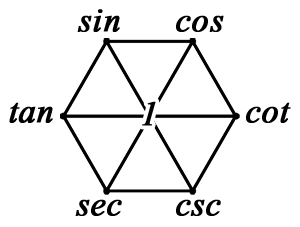미적분
수열의 극한
수열의 수렴과 발산
Definition 1 (수열의 수렴) 수열
Definition 2 (수열의 발산) 수열
Remark (remark-수열의 발산). 수열
- 양의 무한대로 발산
- 음의 무한대로 발산
진동
수열
수열의 극한에 대한 기본 성질
Theorem 1 (수열의 극한에 대한 기본 정리) 두 수열
수열의 극한값의 계산
수열의 극한값의 대소 관계
Theorem 2 (수열의극한의대소관계)
등비수열의극한
Theorem 3 (등비수열의 수렴과 발산) 초항은
Theorem 4 (등비수열의 수렴 조건) 초항은
급수의 수렴과 발산
급수와 수열의 극한 사이의 관계
등비급수
급수의성질
함수의 극한과 연속
함수의 극한
함수의 수렴과 발산
우극한과 좌극한
함수의 극한에 대한 성질
함수의 극한의 응용
Definition 3 (the limit of a function)
Symbolically:
Definition 4 (One-sided limit, right-sided limit)
Definition 5 (One-sided limit, left-sided limit)
Theorem 5 (함수의 극한에 대한 정리)
Theorem 6 (미정계수의 결정)
이것은 referencing Equation 1 테스트 입니다.
함수의 연속
Definition 6 (Continuity) A function
연속함수
Theorem 7 (연속함수의 성질) 두 함수
Theorem 8 (EVT : The Maximum Minimum Theorem)
Theorem 9 (EVT : 최대·최소 정리) 함수
사잇값 정리
Theorem 10 (IVT : The intermediate value theorem)
Theorem 11 (사잇값정리) 함수
Corollary 1 (Bolzano’s theorem)
Corollary 2 (사잇값 정리의 활용) 함수
미분
미분계수와 도함수
평균변화율과 미분계수
Definition 7 (증분) 함수
Definition 8 (평균변화율(ARC or MV) : Average Rate of Change)
Definition 9 (
Definition 10 (미분가능한함수) 함수
특히 함수
Remark (연속 및 미분가능).
미분계수의 기하학적 의미
Remark (미분계수).
미분가능성과 연속성
도함수와 미분법
Definition 11 (도함수-a derived function) 미분가능한 함수
Definition 12 (미분법) 함수
Theorem 12 (함수
Theorem 13 (함수의 실수배, 합, 차, 곱의 미분법) 세 함수 f(x), g(x), h(x)가 미분가능할 때
Theorem 14 (미분과나머지정리의관계)
- 이차 이상의 다항식
- 이차 이상의 다항식
Proof. Equation 2 의 경우
다항식
- 의 경우
나누어 떨어지면
Theorem 15 (기타)

image
Remark (역함수 미분법 참고).
Theorem 16 (역함수의 미분법 - hakchin notation 1) 미분가능한 함수
Proof.
Theorem 17 (역함수의 미분법 - hakchin notation2) 미분가능한 함수 f(x)의 역함수
Proof.
Theorem 18 (역함수의미분법) 미분가능한 함수
Proof.
:
- 함수
Exercise 1 (역함수의 미분법) 미분가능한 함수
Solution.
도함수의 활용
접선의 방정식과 평균값 정리
Theorem 19 (Rolle’s theorem)
Theorem 20 (Rolle’s theorem ww) If
This version of Rolle’s theorem is used to prove the mean value theorem, of which Rolle’s theorem is indeed a special case. It is also the basis for the proof of Taylor’s theorem.
Theorem 21 (MVT)
Theorem 22 (MVT-다른표기)
Theorem 23 (평균값 정리(MVT) Let
Example 1 (이차함수관련) 이차함수
함수의 증가와 감소
Remark (notation idea for increasing). 다음을 참고하였다.
Definition 13 (증가함수)
Definition 14 (감소함수)
Definition 15 (증가상태)
Definition 16 (감소상태)
Theorem 24 (함수의증가1)
Theorem 25 (함수의감소1)
Theorem 26 (함수의 증가2)
Theorem 27 (함수의 감소2)
Theorem 28 (함수의증가3)
Theorem 29 (함수의감소3)
함수의 극대와 극소
Definition 17 (임계점, critical point)
Remark (Extrema & Critical point). 극값을 갖는다
Definition 18 (극대, local Maximum) 함수
Definition 19 (극대, local Maximum kk)
Definition 20 (엄격한 극대, strict local Maximum)
Definition 21 (엄격한 극대2, strict local Maximum2)
Definition 22 (극소, local minimum) 함수
Definition 23 (극소, local minimum ee)
Definition 24 (엄격한 극소, strict local minimum)
Definition 25 (엄격한극대2, strict local Maximum2)
Theorem 30 (극값과 미분계수) 함수
Remark. 일반적으로 위의 역은 성립하지 않는다.
Theorem 31 (극대관련) 미분가능한 함수
Theorem 32 (극소관련) 미분가능한 함수
Theorem 33 (
Remark (상수함수). 어떤 열린 구간에서 극댓값이면서 극솟값이면 해당 구간에서 상수함수이다.
Remark (삼차함수사차함수대칭관계).
방정식과 부등식, 속도와 가속도
여러 가지 미분법
아래 위키를 참고하기
Remark.
Theorem 34
Remark. 삼각함수 6각형을 보고 마음속으로 관련있는 공식들을 상기하여 보자.

생각할 수 있는 것들은 일단 아래와 같은 것들이 있다.
삼각함수의 역수 관계
삼각함수의 제곱합 관계
삼각함수의 곱셈 관계
삼각함수의 미분 관계
쌍곡선함수(Hyperbolic function)의 미분 관계
로그함수의 미분법
Theorem 35 (로그함수의미분법)
Proof.
삼각함수의 미분
개쎈 p572를 latex 으로 여기에 서술해 보기
Theorem 36 (
Proof. Insert related imaage later.
접선의 방정식
Definition 26 곡선 위의 점 P에 대하여 곡선 위를 움직이는 점 Q가 P에 한없이 다가갈 때 직선 PQ가 하나의 직선으로 수렴한다면 그 극한 위치의 직선을 P에서의 접선이라 한다.
함수의 그래프
Definition 27 함수
Definition 28 함수
Definition 29 Let
Definition 30 Let
Theorem 37
Definition 31 곡선
Theorem 38 함수
Remark. If a function has a second derivative, the value of the second derivative is either 0 or undefined at each of that function’s inflection points.
적분
부정적분
Definition 32 (부정적분1) 미분하여
Theorem 39 (부정적분표현)
Proof.
Theorem 40 (함수의 실수배, 합, 차의 부정적분) 두 함수
Reference Sites
정적분
Definition 33 (정적분 dd)
Theorem 41 (급수와 정적분의 관계)
Proof.
- You can use Definition of definite integral 과 평행이동 or
Proof.
- 다른 관점으로 생각해 본다면,
Remark (급수와정적분의관계).
Theorem 42 (부분적분법)
Proof. 어쩌구 저쩌구
Remark (tabular integration). tabular integration 이라는 방법을 쓰면 좀 쉽게 할 수 있다. youtube 자료로는 https://youtu.be/E8N1E5ZAiIU 찾아볼 수 있다.
Example 2 (부분적분법 dd) 미분가능한 두 함수
Solution.
Remark (삼차함수넓이적분).
정적분의 활용
속도와 거리
Remark (위치·속도·가속도의관계). 위치를 미분하면 속도, 속도를 미분하면 가속도를 구할 수 있고, 미분과 적분은 서로 역연 산의 관계이므로 다음이 성립한다.

Theorem 43 (속도와거리) 수직선 위를 움직이는 점
점
점
점
Footnotes
Instantaneous Rate of Change↩︎